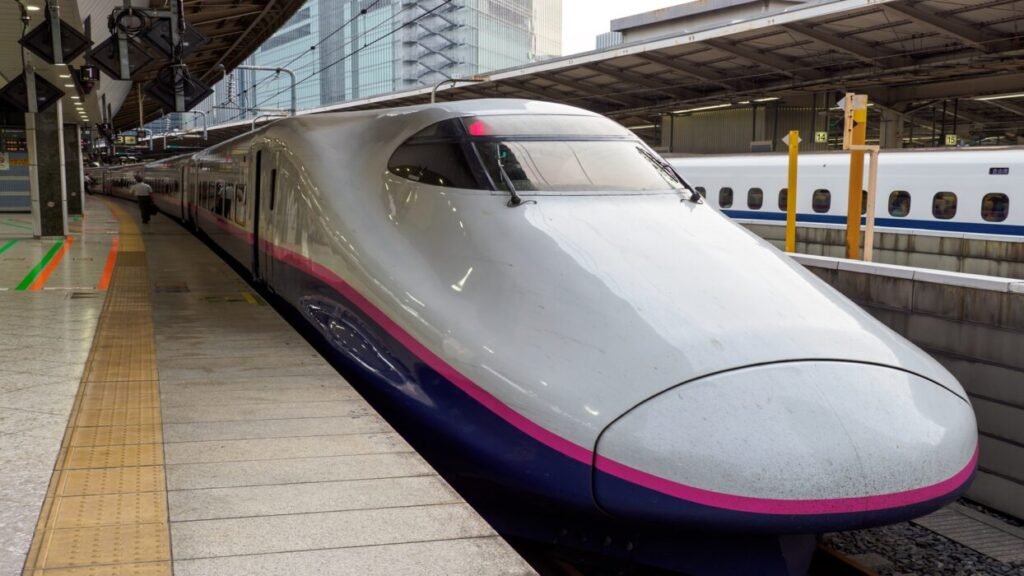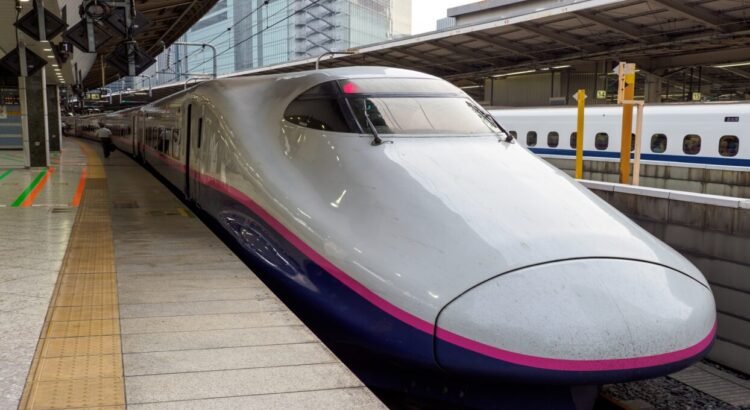
Few destinations in the world offer such a compelling contrast between ancient tradition and cutting-edge technology as Japan. A land where time-honored rituals harmonize with futuristic innovations, Japan is a place where visitors can witness centuries-old temples nestled quietly between steel skyscrapers, where bullet trains streak past bamboo groves, and where a piece of sushi holds centuries of cultural refinement.
Traveling through Japan is like stepping into a living museum — but one that moves at 320 kilometers per hour. It’s a country where the spirit of the past is never lost in the rush of the present. To truly understand and appreciate Japan, one must immerse in its sacred spaces, marvel at its advanced infrastructure, and savor its world-renowned cuisine — particularly the artful simplicity of sushi.
Ancient Temples: Echoes of a Timeless Spirit
Japan’s spiritual history is woven into the fabric of its landscape. With thousands of temples and shrines scattered across the country, visitors are never far from a site of historical or religious significance. These sacred structures are not merely tourist attractions; they are still active centers of worship, meditation, and seasonal festivals.
From the bustling city of Kyoto to the tranquil forests of Nara and Nikko, temples embody a deep reverence for nature, simplicity, and harmony. Kyoto alone, once the imperial capital for over a thousand years, is home to more than 1,600 Buddhist temples and 400 Shinto shrines. Each one is unique, often with gardens, gates, pagodas, and wooden halls that date back centuries.
One of the most iconic is Kinkaku-ji, the Golden Pavilion, whose top two stories are covered in gold leaf. Reflecting in the calm waters of its surrounding pond, the temple stands as a shimmering testament to Zen Buddhist aesthetics and architectural elegance. Nearby, Ryoan-ji offers a different form of contemplation — a rock garden with precisely arranged stones on a bed of raked white gravel, inviting silent reflection and interpretation.
In contrast, Todai-ji in Nara astonishes visitors with its sheer scale. The Great Buddha Hall houses a massive bronze statue of Vairocana Buddha, and the entire complex reflects the grandeur of Japan’s early spiritual and political power. Here, deer roam freely in the temple grounds, considered messengers of the gods, adding to the ethereal experience.
Meanwhile, Fushimi Inari Taisha, with its thousands of vermillion torii gates, creates a seemingly endless path up a wooded hillside. Walking through these gates is more than a photo opportunity — it’s a symbolic journey into the spiritual heart of Japan, honoring Inari, the deity of prosperity and rice.
These sacred sites are often surrounded by moss gardens, ancient cedar trees, stone lanterns, and koi ponds. Time seems to slow in their presence. Even in modern cities like Tokyo and Osaka, temple complexes offer quiet corners of calm amidst the chaos.
High-Speed Trains: The Pulse of Modern Japan
If temples represent Japan’s soul, then the high-speed trains — known as Shinkansen — are its arteries. The Shinkansen is more than just a fast way to get around; it is a symbol of efficiency, innovation, and national pride. Introduced in 1964, just in time for the Tokyo Olympics, the bullet train revolutionized rail travel and set the global standard for high-speed transit.
Running at speeds up to 320 km/h (200 mph), the Shinkansen glides so smoothly that passengers can balance a coin on its edge. Inside, seats are spacious and impeccably clean, with large windows offering panoramic views of rice paddies, mountains, and coastal towns. The experience is peaceful and quiet, with announcements often delivered in both Japanese and English, and a level of punctuality unmatched anywhere in the world.
Japan’s rail network is extensive, connecting major cities like Tokyo, Osaka, Kyoto, Hiroshima, and Sapporo with precision and speed. For travelers, it means one can visit a centuries-old temple in Kyoto in the morning, enjoy sushi lunch in Osaka by noon, and watch the sunset over Hiroshima’s Peace Memorial Park by evening — all without ever needing to drive or fly.
On board, travelers can enjoy the Japanese tradition of ekiben — boxed meals sold at train stations and onboard. Each region offers its own version, often showcasing local specialties. These bento boxes are beautifully packaged, with rice, pickles, meat, or fish, and often seasonal vegetables, making the train journey not just efficient, but also gastronomically satisfying.
The Shinkansen also highlights Japan’s commitment to safety and environmental sustainability. Despite carrying millions of passengers annually, the safety record is near perfect, and energy-efficient models are continually being developed to reduce carbon footprints.
For many visitors, riding the Shinkansen is not just a mode of transport — it’s an experience in itself. It embodies the Japanese values of order, respect, and excellence, and leaves travelers with a newfound appreciation for public transportation.
Sushi: The Art of Edible Precision
Sushi is more than just food in Japan — it is an art form, a cultural expression, and a philosophy of balance, seasonality, and presentation. From humble beginnings as preserved fish in fermented rice, sushi has evolved into a global delicacy, yet its spiritual home remains in the heart of Japan.
Eating sushi in Japan is a revelation, even for those familiar with it abroad. The freshness of the ingredients, the skill of the chef, and the atmosphere of the restaurant combine to elevate the dining experience into something almost sacred.
There are various forms of sushi: nigiri (sliced fish atop vinegared rice), sashimi (raw fish without rice), maki (rolled sushi with seaweed), and temaki (hand rolls), among others. Each style has its own method, etiquette, and flavor profile.
In cities like Tokyo, sushi ranges from conveyor belt chains where plates are color-coded by price, to Michelin-starred establishments like Sukiyabashi Jiro, made famous by the documentary Jiro Dreams of Sushi. Here, the chef may spend years perfecting the art of cooking rice before ever slicing fish.
But even in tiny alleyway bars or quiet coastal towns, sushi is treated with care and respect. In port cities like Hakodate or Kanazawa, the catch of the day might include uni (sea urchin), ika (squid), or toro (fatty tuna), served within hours of being pulled from the sea. The emphasis is always on freshness, seasonality, and simplicity.
Wasabi is grated fresh from the root, soy sauce is used sparingly, and pickled ginger is provided to cleanse the palate between bites. Sushi chefs are often trained for decades, mastering knife techniques, fish selection, rice temperature, and even customer interaction.
Sushi also carries spiritual undertones. It reflects the Japanese principle of wabi-sabi — the beauty of impermanence and imperfection. A perfect piece of sushi is not overly adorned; it is subtle, elegant, and fleeting — meant to be savored in a single bite.
For travelers, participating in a sushi-making class or visiting a fish market like Tsukiji or Toyosu can deepen the appreciation. Watching tuna auctions at dawn, learning to roll maki, or simply savoring uni on a quiet morning by the sea becomes a cultural experience as rich as visiting a temple.
Where Tradition Meets Modernity
Japan is a place where opposites not only coexist but enhance each other. The quiet solemnity of a temple garden complements the whoosh of a bullet train. The refined elegance of a sushi bar stands in contrast to the neon-lit streets of Shibuya or Akihabara. This balance is no accident — it is deeply rooted in Japanese philosophy and aesthetics.
Throughout the country, this harmony is evident. In Tokyo, one can see monks strolling beneath skyscrapers. In Osaka, centuries-old castles rise above bustling commercial districts. In Hiroshima, moments of deep reflection at the Peace Park can be followed by lively evenings at okonomiyaki street stalls.
Even the accommodation reflects this blend. Traditional ryokan inns offer tatami mats, hot spring baths, and multi-course kaiseki dinners, while capsule hotels and futuristic pods provide a glimpse into hyper-modern minimalism. Whether sleeping under paper lanterns or LED lights, travelers are immersed in an experience that is uniquely Japanese.
Technology doesn’t erase tradition here; it often preserves it. Ancient manuscripts are digitized, old temples are protected by seismic engineering, and sushi artisans use apps to track the freshest fish. This synergy of past and future gives Japan a rhythm unlike anywhere else.
Conclusion: A Journey Like No Other
To experience ancient temples, high-speed trains, and sushi in Japan is to explore the very essence of contrast and harmony. It is to wander through moss-covered shrines in the morning, board a futuristic train in the afternoon, and enjoy world-class cuisine by evening. It is to be transported — not just across geography, but across time, culture, and philosophy.
Japan offers not just a destination, but a transformation. It is a place where the sacred and the high-tech, the simple and the sophisticated, the silent and the fast-moving all exist in perfect balance. For those seeking a journey of beauty, meaning, and unforgettable experiences, Japan awaits — ancient, modern, and deliciously alive.




